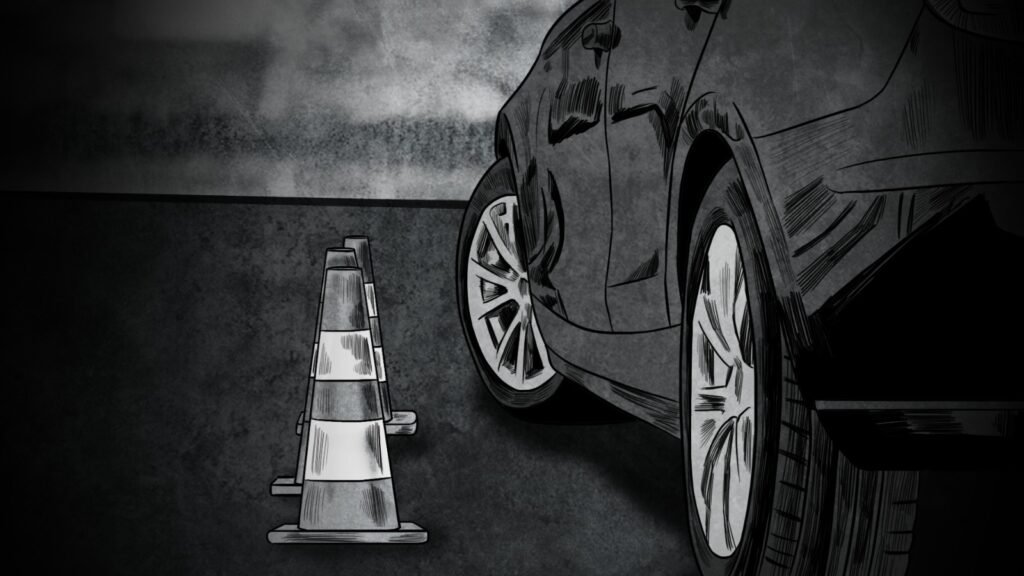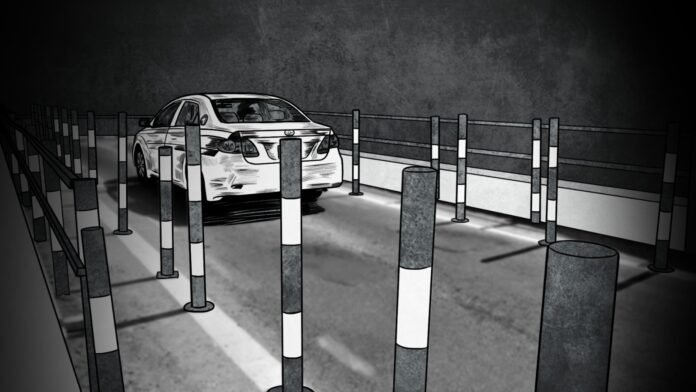My Qatari colleague, Salem, told me his story about obtaining his driving license in 2001. At that time, he had just completed his high school exams and went to the driving school, which was in a large open area with two small administrative buildings.
Every day during training, Salem would stand in front of a small window where an employee would distribute trainers and training cars to the trainees. Most of the trainers were Indian.
Once, Salem asked his trainer to focus on reversing on an L-shaped track for that day. The trainer replied that there was no need because Qataris were exempt from the reversing, parallel parking, and S-shaped reversing tests. However, Salem insisted on learning these skills, believing that education itself is a goal worth pursuing.
On another occasion, Salem went on the road with his trainer to learn how to drive under normal conditions. After the session, the trainer told him that his level was good. The trainer didn’t know that Salem had the opportunity to practice driving with his brothers and friends. He advised Salem that he could go straight to the test with his current level.
When Salem went to take the test, he discovered that he was not eligible to apply for a driving license because he was still under 18. He was told to go to the old Traffic Department building in South Khalifa City to get an official exception.
He met an officer there who asked him why he wanted a driving license before turning 18. Salem explained that he had completed high school with distinction and would soon need a car to attend university. Life was simpler then, and the streets were not crowded. The officer patted him on the shoulder and said, “As a reward for your hard work and academic excellence, here’s my approval.”
On the same day, Salem returned to the driving school with the official approval to take the test. He stood in front of a small window where he was shown some traffic signs and signals. He was then told to wait for the non-Qataris to complete their parking and reversing skills tests. He went to have breakfast and tea, then returned to be the first to take the practical test on the road. After driving a few meters from the driving school with the examiner, he completed the test in half an hour. The examiner asked him to check the result at the end of the day, and Salem found his license ready at the Traffic Department.
More than two decades have passed since this story, during which time laws, driving test techniques, and training methods have changed. The number of license applicants has increased, making the process more complicated than in Salem’s day.
Driving has undoubtedly become an essential part of daily life, not just a skill but a necessity for safe and secure transportation. Therefore, driving schools play a vital role in society, helping individuals learn to drive correctly and safely. They aim to teach basic driving principles, traffic laws, and road safety procedures.
The Importance of Driving Schools
Undoubtedly, driving schools are important beyond teaching students how to drive vehicles. They extend to improving road safety and enhancing traffic culture among drivers. These schools provide practical and theoretical training to trainees, equipping them with the necessary skills to handle various driving conditions and emergency situations.
This training includes knowledge of traffic laws and enhancing traffic culture through theoretical lessons that familiarize trainees with driving rules. This culture helps create a more disciplined traffic environment and teaches the correct driving techniques, directly contributing to reducing traffic accidents. Drivers who undergo good training are more aware of potential risks and better able to make proper driving decisions, making them less likely to be involved in traffic accidents.
Evolution of driving schools
In the early days, and in many Arab countries, driving was taught through personal experience and training, with a heavy reliance on learning from relatives and friends, as was the case with Salem. Only a few specialized schools lacked modern equipment and techniques, relying on traditional methods, oral instruction, and fundamental theories, mainly on practical driving on regular roads.
However, driving schools have seen significant development over the decades. Technological advancements and continuous improvements in infrastructure have led to the modernization of curricula and the adoption of modern teaching methods.
Over time, governments began to recognize the importance of developing driving schools and started supervising them in a regulated manner. Establishing a driving school is no longer arbitrary or unregulated; it now requires a license from the Traffic Department.
As stated in Article 106 of the Executive Regulations of the Traffic Law issued by Decree-Law No. (19) of 2007 in the State of Qatar: “The establishment or management of schools for teaching the driving of mechanical vehicles shall be licensed by the Traffic Department, which has the right to supervise and inspect these schools in all aspects related to their activities.”

Technology and Digital Advancement
Driving schools have evolved, with specialized schools being established and equipped with updated curricula and equipment. Devices have been provided to help trainees acquire driving skills in a safe environment before moving to actual road driving. In recent years, driving schools have experienced a significant leap in technology usage, which has improved the quality of education and made it easier for trainees to reach the required level.
Qatar has set standards for driving schools to ensure their graduates are qualified to drive. The executive regulations specify that the school building must include rooms for theoretical and practical study, training areas and equipment, driving simulators, an administration office, and facilities that meet health standards.
The school must also provide a sufficient number of training vehicles owned by the school as determined by the Traffic Department. These vehicles should be equipped with special brake and clutch pedals for the instructor, have two signs reading “Learning + L,” and be painted in a uniform colour specific to each school and approved by the Traffic Department.
The training curriculum includes theoretical study covering traffic laws, rules, and etiquette, the principles of driving, the basics of vehicle mechanics, and first aid methods. Practical training on various driving operations must also be conducted according to a specific curriculum approved by the Traffic Department.
Regarding the driving test, Qatari law states that a committee from the Traffic Department conducts it, which includes both a verbal and practical exam. Performance is evaluated with grades (Excellent, Good, Poor) and covers driving principles, basic vehicle mechanics, and traffic laws.
The candidate must achieve at least a “Good” rating in all subjects to pass the exam. If a student fails the practical part, they can retake the test after a period determined by the committee. Those who pass receive a driving license after submitting the required documents and paying the fees. The licensed individual must carry the license during training and present it upon request.
Collaboration between Traffic Departments and Driving Schools
Government supervision ensures transparency in operations, registration procedures, and testing, which reduces the chances of manipulation and fraud. Therefore, driving schools are subject to strict monitoring by the traffic department, which sends periodic committees to assess the school’s adherence to the specified educational curriculum and traffic regulations. This aims to protect the lives of citizens and everyone who obtains a driving license.
Additionally, the General Directorate of Traffic organizes workshops on practical training and its role in reducing accidents, specifically for officials and trainers of driving schools.
An article published by the Qatar News Agency explained that these workshops focus on presenting the training standards adopted by driving schools and their compliance with the traffic systems and laws of the state. They also highlight the efforts made to develop training systems in these schools, the standards applied in driving schools, the level and qualification of trainers, and the introduction of a unified driving instruction curriculum prepared by the General Directorate of Traffic, which has been distributed to all driving schools.

Challenges Facing the Establishment of Driving Schools
Driving schools face financial, logistical, and social challenges and must keep pace with ongoing changes.
The first of these challenges relates to the costs of cars, maintenance, insurance, and trainers’ salaries, which increases course fees and makes them inaccessible to everyone.
Additionally, schools suffer from a lack of qualified and competent trainers. Qatari law prohibits teaching vehicles driving without a license, and applicants for this license must have held a driver’s license for no less than five years. They must know vehicle mechanics and traffic laws and be capable of teaching driving both theoretically and practically. They must also have good conduct and not have been convicted of a crime involving moral turpitude or dishonesty.
Some driving schools also lack female trainers. Rand Mazen, a trainee at a driving school in Qatar, chose her school because it was close to her home and she could walk there.
However, Rand struggled due to the absence of a female trainer and reluctantly accepted a male trainer. During her lessons, the trainer would panic and grab the wheel to correct the car’s path, causing Rand significant embarrassment and affecting her mental state. This filled her with regret for deciding to learn to drive and obtain a license.
Moreover, there is a scarcity of specialized trainers for people with disabilities in most schools. In an interview with Zaki Jumaa, he explained that his trainers treated him differently, thinking they were doing him a favour. Zaki couldn’t tolerate the trainers’ pitying behaviour and asked his brother to teach him instead, as the school lacked the basics for dealing with people with disabilities. I highlighted this issue in my previous article titled Driving License for People with Disabilities.
Driving schools also face an ongoing challenge in keeping up with changes in traffic laws and regulations, which require regular updates to training curricula to ensure compliance with traffic laws. Such developments always come with additional resources, effort, money, and feasibility studies to adapt the school and its offerings to traffic requirements.
Driving schools are the cornerstone in qualifying drivers, contributing to improving driving skills, and are essential institutions that play a pivotal role in enhancing road safety and reducing traffic accidents.
By developing training curricula, using modern technologies, and addressing the challenges they face, these schools can play a crucial role in building a community of well-trained and aware drivers. Therefore, efforts to develop and improve driving education programs must continue to ensure the best possible training for trainees and achieve the desired goals in enhancing road safety, ensuring security, improving quality of life, and creating a more aware and disciplined driving community.




